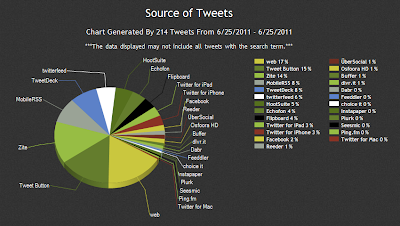I love the notion of Web 2.0 tools. These tools allow my students, family and friends to produce all types of creative artifacts. You can create digital timelines which include video and photographs, you can document the family tree on geneaological sites or you can create a multimedia presentations on a long dead personality or artist. Web 2 tools have allowed us to create and then share these artifacts using social networking sites, wikis or even our own website. We can use Web 2 tools to voice an opinion or debate an issue, we can buy or even review products we have bought online on an e-commerce site, and for the most part these things are free. Sometimes learning is part of the interactive process that occurs.
It always surprises me when I hear teachers commenting on the fact that a Web 2 Tool has started to charge. It is as though these companies should be offering these services for free out of some sense of altruism. We are happy to use these products to;
- improve the learning of our students
- create engaging learning spaces
- allow students ownership of text and ideas
- create work of increasing complexity and
- reach an authentic audience.
But can we really complain when we have to pay for access to these same products?
The Web 2.0 Misconception:
We as educators have the benefit of these free products while they are under the Beta Testing phase. In a way we have access to these tools for free because we are providing a service for these companies - we (the collective users) conduct their Beta testing for them. The bugs in the coding, the glitches in the system or the problems with embedding are all ironed out during this phase. We, as the Beta users benefit from this symbiotic relationship with an extended free trial.
Our Online Integration:
Some of these web based tools are exceptionally good applications. They have been designed to allow collaboration, include chat facilities and even email notifications or RSS feeds. They have been developed with easy to use interfaces that people can navigate through without the need for further skill development. Some have features that allow you to connect, use or integrate with other Web tools. In short many have become an everyday tool that people have incorporated into their online routines.
Web 2.0 Solution:
I can think of half a dozen Web 2 tools that have gone pay-to-use in the last twelve to eighteen months; Inspiration, Xtranormal, Ning and in the last week or so Webspiration. There has been on ongoing discussion on education blogs and websites like Learnitin5 about whether teachers would continue to us Ning now that you have to pay for it. Many teachers have already found alternatives like Moodle, Edmodo or Drupal. This is how many people deal with these commercial decisions, they find the next alternative.
This is an important point for us as educators. It is not about teaching our students how to use a particular application. The application is just the vehicle for the learning. We are providing them with the skills to evaluate the tools available and to use the one most appropriate for the job. We are teaching our students how to think independently, how to research cleverly, where to locate salient and reliable information, how to decode the information and then to present it in such as way that it reinterprets those elements that are the focus of our inquiry. We do not need a Ning for this, we need the spirit of collaboration, we need an attitude of shared responsibility, we need a classroom where the learning occurs when students feel confident enough to fail.
We need to treat Web 2 tools like they treat us; we use them until they are longer appropriate and then we find another one, and we do this in the spirit of adventure and change. We do this because each new tool that comes along does something more than the last, allows us to collaborate in new ways or combines existing technology in a way that we had not thought possible.
So the next time that your favourite Web 2 tool moves to pay-to-use, find an alternative, test out it's limitations, list it's advantages, get your students to see how they can mash it with other Web 2 tools and then share it with the rest of us.
Some alternatives:
Ning | Elgg, BuddyPress LovdbyLess Spruz, SocialGo
| Webs, WackWall, Grou.ps, Grouply | BigTent, Zerista, Groupsite, SocialGo |
Xtranormal | Stage’D Kerpoof Flixtimes Muvizu
| Goanimate ToonDoo Voki | Animasher DoInk Memoov |
Webspiration | Wisdomap Mindmeister Mind42 | Mindnode Mindomo Bubbl.us | Cacoo Exploratree Wisemapping |







